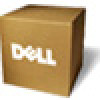Dell Broadcom NetXtreme Family of Adapters Broadcom NetXtreme 57XX User Guide - Page 109
Modifying a Team
 |
View all Dell Broadcom NetXtreme Family of Adapters manuals
Add to My Manuals
Save this manual to your list of manuals |
Page 109 highlights
NOTE: There must be at least one Broadcom network adapter assigned to the team. NOTE: A team created with a single adapter will not have load balancing or failover capabilities. The TCP Offload Engine (TOE), Large Send Offload (LSO), and Checksum Offload (CO) columns indicate if the TOE, LSO, and/or the CO properties are supported for the adapter. The TOE, LSO, and CO properties are enabled for a team only when all of the members support and are configured for the feature. If this is the case, then the team offload capabilities appear on the bottom of the screen. NOTES: If an adapter is included as a member of a team and you change any advanced property, then you must rebuild the team to ensure that the team's advanced properties are properly set. If an adapter with a TOE key is included as a member of a team and you remove the TOE key, then you must rebuild the team to ensure that the team does not appear as a TOE-enabled team. Adding a network adapter to a team where its driver is disabled may negatively affect the offloading capabilities of the team. This may have an impact on the team's performance. Therefore, it is recommended that only driver-enabled network adapters be added as members to a team. 11. Click OK to accept your changes to the team members. 12. Click Create to save the team information. 13. Repeat steps 6. through 12. to define additional teams. As teams are defined, they can be selected from the team list, but they have not yet been created. Click the Preview tab to view the team structure before applying the changes. 14. Click Apply/Exit to create all the teams you have defined and exit the Manage Teams window. 15. Click Yes when the message is displayed indicating that the network connection will be temporarily interrupted. NOTES: The team name cannot exceed 39 characters, cannot begin with spaces, and cannot contain any of the following characters Team names must be unique. If you attempt to use a team name more than once, an error message is displayed indicating that the name already exists. The maximum number of team members is 8. When team configuration has been correctly performed, a virtual team adapter driver is created for each configured team. If you disable a virtual team and later want to reenable it, you must first disable and reenable all team members before you reenable the virtual team. When you create Generic Trunking and Link Aggregation teams, you cannot designate a standby member. Standby members work only with Smart Load Balancing and Failover and SLB (Auto-Fallback Disable) types of teams. For an SLB (Auto-Fallback Disable) team, to restore traffic to the load balance members from the standby member, click the Fallback button on the Team Properties tab. When configuring an SLB team, although connecting team members to a hub is supported for testing, it is recommended to connect team members to a switch. Not all network adapters made by others are supported or fully certified for teaming. 16. Configure the team IP address. a. From Control Panel, double-click Network Connections. b. Right-click the name of the team to be configured, and then click Properties. c. On the General tab, click Internet Protocol (TCP/IP), and then click Properties. d. Configure the IP address and any other necessary TCP/IP configuration for the team, and then click OK when finished. Modifying a Team After you have created a team, you can modify the team in the following ways: Change the type of team Change the members assigned to the team Add a VLAN Modify a VLAN (using Expert Mode) Remove a team or a VLAN (using Expert Mode) To modify a team 1. Click the Team Management button at the bottom of the BACS 3 window, or from the View menu, select Navigate, then Team Management. 2. Select one of the listed teams. 3. From the Team menu, click Edit Team, or right-click one of the teams in the list and select Edit Team. This option is only available if a team has already been created and is listed in the Team Management pane.















